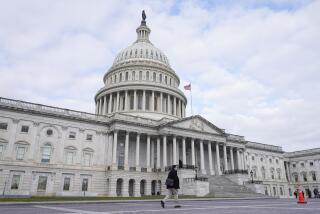Most of Senate Backs Restoring IRA Tax Break
- Share via
WASHINGTON — Nearly three-fourths of the Senate lined up Tuesday behind a bill restoring fully deductible individual retirement accounts for all workers, but the Bush Administration immediately rebuffed the legislation.
“It makes good sense for our economic future,” Senate Finance Committee Chairman Lloyd Bentsen (D-Tex.) said in announcing that he and 71 other senators--a prospectively veto-proof majority--were introducing the bill.
It would allow all workers, regardless of income and whether they have a company pension plan, to make a tax-deductible IRA contribution of up to $2,000 a year. Or, they could choose a new type of IRA that, instead of an immediate deduction, would generate tax-exempt interest if held for five years or longer. A third option: split $2,000 between the two types of accounts.
In addition, the bill would permit penalty-free withdrawals from an IRA to make the down payment on a first home, pay catastrophic medical expenses or finance a college education.
Asked if the Administration would support the bill, presidential press secretary Marlin Fitzwater said: “We are not in favor of that at this point.”
Despite Senate support from a majority of both political parties, the bill faces obstacles other than the White House.
First, the as-yet-uncalculated cost would have to be paid, probably by raising other taxes or by cutting spending. “We are looking at how to pay,” Bentsen said. “It’s not going to be easy, but it will be paid for.”
Second, Rep. Dan Rostenkowski (D-Ill.), chairman of the House Ways and Means Committee, is opposed. “He doesn’t think we should be spending money on tax breaks, least of all not for tax breaks for affluent people,” said a Rostenkowski aide.
Although President Bush has proposed an IRA plan that would generate tax-free interest and favors penalty-free withdrawals for emergencies, his Administration has argued against IRAs on ground they do not result in new savings.
The giant 1981 tax cut made deductible IRAs available to all workers. Four years later, 16.2 million couples and individuals claimed IRA contributions totaling $38.2 billion. About 36% of the tax saving went to people with incomes over $50,000.
The 1986 tax overhaul restricted deductible IRAs to lower- and lower-middle-income people and to higher-income workers not covered by a company pension. On tax returns filed in 1989, the deduction was claimed on only 6.4 million returns, for a total of $12 billion.
Bentsen cited studies showing that most of the money that went into IRAs were new savings. Opponents argue that most of the IRA money was nothing more than a transfer from other savings.
Under present law, a person who is not allowed a tax-deductible IRA may still deposit up to $2,000 a year in such an account.
More to Read
Get the L.A. Times Politics newsletter
Deeply reported insights into legislation, politics and policy from Sacramento, Washington and beyond. In your inbox twice per week.
You may occasionally receive promotional content from the Los Angeles Times.










